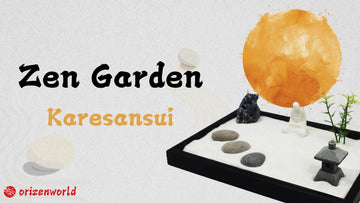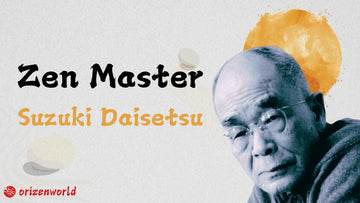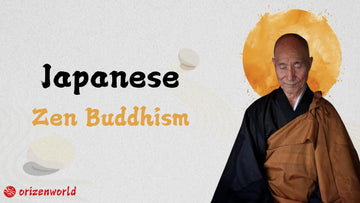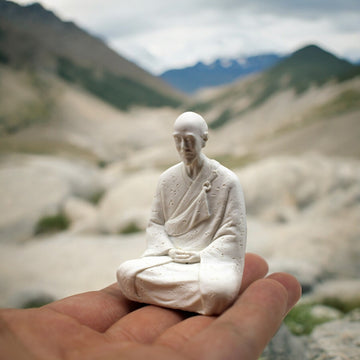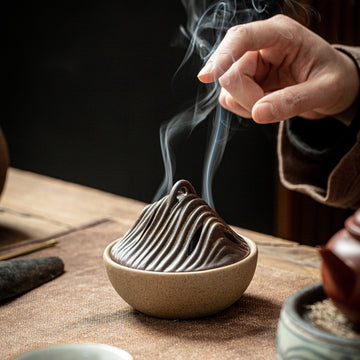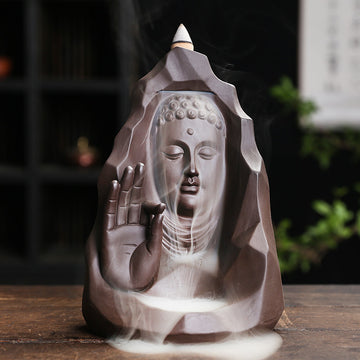When you think of a garden, you might picture flowing rivers, tall trees, and chirping birds. However, in Japan, there is a unique type of garden where stones represent mountains, and sand symbolizes water, creating what seems like a miniature, artificial landscape. This style is called Karesansui, or Zen garden.
Originating in Japan, Zen gardens have become internationally renowned. Even if you haven't visited Japan, you've likely heard of them. Countless people travel to Kyoto, eager to experience these tranquil gardens firsthand, as they offer a peaceful escape from the chaos of daily life.
In this article, I will guide you through the fascinating world of Zen gardens, exploring their origins, symbolism, and how you can create your own peaceful garden to enjoy the calming essence of Zen.
A Zen garden typically consists of carefully raked fine sand and well-arranged stone groups, creating a serene and tranquil atmosphere. These gardens are often found in small Zen Buddhist temples, where the simplicity of the design encourages meditation and introspection. The sand, meticulously raked into patterns, forms the foundation of the garden, while strategically placed stones add depth and symbolism.
The intricate sand patterns, usually drawn in the early morning, represent water—rivers, seas, or clouds. Despite the absence of actual water, the patterns evoke the feeling of flowing water, symbolizing impermanence and the ever-changing nature of life. The gentle lines carved into the sand often reflect a calm, peaceful state of mind, helping those who view or tend the garden to find clarity and focus.
This concept of representing water with sand is a unique feature of Karesansui, or Zen rock gardens. It reflects the Zen philosophy of simplicity and the profound impact of minimalistic design in creating a space that fosters mental peace and spiritual growth.
Zen gardens, or Karesansui, have deep historical roots that trace back to both Chinese and Japanese cultures. The influence of Chinese landscaping began in the 7th century when Emperor Wen of the Sui Dynasty gifted a bonsai to the Japanese emperor, which featured stones arranged in a shallow tray. While the gift itself might not have had a significant historical impact, it symbolized an early idea of shaping natural elements into art. This concept laid the groundwork for the development of Japanese gardens, particularly the Zen garden style, which is largely inspired by bonsai art.
In the 14th century, during the Muromachi period (1393–1573), Zen gardens began to take a more defined form in Japan. The term "Karesansui" first appeared in the Heian period (794–1185), referring to rock gardens without water features. In Kyoto, the capital at the time, aristocratic gardens known as shinden-zukuri typically featured ponds, streams, and waterfalls. However, Karesansui gardens focused on rock arrangements in spaces further from water sources, becoming an integral part of the gardens designed for Japanese nobility.
By the Muromachi period, Zen gardens evolved into fully independent gardens, no longer just a part of larger garden landscapes. These gardens used rocks, white sand, and moss to symbolize nature without the need for water, representing mountains, rivers, and islands. This minimalist design became a characteristic style of Zen garden art.
Zen monks played a crucial role in the development of these gardens. They created them as spaces for meditation and spiritual reflection, utilizing the gardens' simplicity and tranquility to enhance their practices. These gardens were designed to encourage focus, peace, and contemplation, making them an essential part of Zen Buddhist culture.
Zen gardens were not just art forms; they were practical and symbolic tools that helped people connect with nature and find inner peace. Their minimalist approach reflects the Zen philosophy of simplicity, impermanence, and the deep connection between humans and nature, making these gardens an enduring symbol of Japanese culture.
Zen gardens are carefully designed spaces that focus on a few key elements, primarily rocks, sand, and plants, each symbolizing aspects of nature and Zen philosophy.
The use of stones, sand, and moss, along with evergreen shrubs, is central to the garden’s design. These elements are selected for their timeless, unchanging nature, which evokes a sense of eternity. The absence of flowering plants, which symbolize impermanence and emotions in Zen, reinforces the garden's focus on stillness and the fleeting nature of life, reminding visitors of the impermanence that defines the world around them.
Rocks are among the most significant features of a Zen garden. They are often arranged in symbolic patterns, with large stones representing mountains, such as Mount Meru in Buddhist cosmology. Smaller stones might symbolize animals like turtles or cranes, which carry cultural and spiritual meaning. The careful placement of these stones encourages reflection and mindfulness, connecting the viewer to nature and the spiritual world.
Sand is another crucial component of a Zen garden. Raked into various patterns, the sand evokes the flow of water, whether it’s a river, ocean, or mist. These designs represent natural elements such as clouds or waves, reminding viewers of nature's constant motion and transient beauty. Despite the absence of water, the sand's patterns offer a sensory experience of movement, adding to the garden’s meditative ambiance.
Additional features, such as stone lanterns, pagodas, and the shishi-odoshi, or bamboo fountain, enhance the Zen garden's atmosphere. The bamboo fountain’s rhythmic sound, created by water flowing into a bamboo tube and tipping it over, is both calming and symbolic. These elements, combined with the careful design of the garden, make the Zen garden a powerful tool for meditation, contemplation, and connection with nature.
Zen garden design is deeply rooted in the principles of simplicity and balance. Typically, these gardens are small in size, often ranging from a few dozen to a few hundred square meters.
The concept is to replicate natural landscapes using minimal elements. White sand symbolizes water, while stones represent mountains, creating an intricate yet simple landscape.
The arrangement of stones and the patterns of sand evoke a sense of vastness and depth, encouraging a meditative atmosphere. The design follows the "three stone" principle, where the main stone is complemented by secondary and tertiary stones, forming a harmonious and balanced composition.
A key aspect of Zen garden design is the concept of Wabi-Sabi, which embraces imperfection, transience, and the beauty of natural aging. This philosophy encourages the acceptance of asymmetry and irregularity, rejecting overly precise or symmetrical designs. In a Zen garden, the placement of stones, plants, and sand reflects this principle, creating a sense of natural disorder that feels both intentional and authentic.
Asymmetry in Zen gardens is not about imbalance, but rather about creating a dynamic flow that invites contemplation. The design aims to harmonize opposing forces such as order and chaos, reflecting the inherent unpredictability of life while maintaining a peaceful, serene environment. This balance of simplicity, Wabi-Sabi, and asymmetry is what gives Zen gardens their unique beauty and meditative quality.
Japan’s ancient capital, Kyoto, is home to some of the most famous Zen gardens in the world. These gardens are carefully designed to encourage meditation and reflection, using rocks, sand, and minimalistic designs to symbolize the natural world. Among the many remarkable gardens in Kyoto, five stand out as prime examples of Zen garden artistry.
Ryoan-ji is perhaps the most famous Zen garden in Japan. Located in Kyoto, this temple’s garden is known for its simplicity and tranquility. The garden features 15 rocks arranged in a sea of meticulously raked gravel. The unique design encourages meditation, as it is impossible to see all the rocks from any single viewpoint, symbolizing the concept of perception and the limitations of the human mind. Ryoan-ji is considered one of the finest examples of karesansui (dry landscape) gardens, making it a must-see for Zen garden enthusiasts.
Ginkaku-ji, or the Silver Pavilion, is another renowned Zen temple in Kyoto. Its dry garden includes a sand mound that symbolizes Mount Fuji, representing the ideals of Zen aesthetics. Ginkaku-ji is a UNESCO World Heritage site, and its garden is an exemplary representation of Japanese garden design. The simplicity and beauty of the garden reflect the Zen principles of balance, calm, and simplicity.
Daisen-in, located within the Daitoku-ji temple complex, features a garden divided into four sections, each symbolizing different stages of life. This garden is a National Treasure of Japan and illustrates the evolution of Zen garden design. Its intricate design invites reflection on the transient nature of life and the importance of spiritual growth.
Saiho-ji, known as the Moss Temple, is famous for its lush moss garden and its dry rock garden designed by Muso Soseki in the 14th century. The serene atmosphere of the moss-covered grounds embodies the principles of Zen, creating a peaceful space for meditation and contemplation.
Finally, Tenryu-ji is another renowned Zen garden in Kyoto, recognized as a UNESCO World Heritage site. This temple features a large pond garden created in the 14th century, known for its scenic beauty and the reflections of surrounding trees in the water. The harmonious integration of nature and design in this garden exemplifies the Zen belief in the unity of human creation and the natural world.
These five Zen gardens in Kyoto serve as a testament to the timeless beauty and philosophical depth of Zen Buddhism. They offer visitors a chance to experience the serenity and tranquility that Zen gardens are famous for.
Shunmyo Masuno is a leading figure in contemporary Japanese Zen gardens. Born in 1953 in Yokohama, Kanagawa, he graduated from Tamagawa University with a degree in agriculture in 1975.
He became a disciple of the Zen master, Seicho Saito, and later embarked on a spiritual journey that deepened his understanding of Zen aesthetics and Japanese traditional culture. In 1985, he became a Zen monk and inherited his family’s religious duties. His design career, rooted in Zen principles, began with his studies at the Daitoku-ji monastery, which laid the foundation for his future work.
Masuno's contributions to garden design have been widely recognized. He has received numerous accolades, including the "National Excellence Award" from the Canadian Landscape Architects Association in 1995 and the "Japan Landscape Architecture Society Award" in 1996. His work extends beyond Japan, including the redesign of gardens at the Canadian Embassy in Japan and the famous “Dragon Gate Garden” at the Soto Zen Temple in Kyoto. As a professor at Tama Art University and a guest professor at the University of British Columbia, Masuno has shaped the next generation of garden designers.
Masuno's design philosophy emphasizes simplicity, tranquility, and the deep connection between Zen and nature. His works, such as the "Waterfall Pine Garden" at Kiyomachi Hall and the "Island Bridge" in the Nitobe Memorial Garden, reflect Zen principles of harmony and balance. His gardens are celebrated for their serene beauty, which blends nature with spiritual expression, offering a quiet space for contemplation and meditation.
Creating your own Zen garden can be a rewarding and calming experience, providing a peaceful space for meditation and reflection. Start by selecting a quiet area in your home, such as a corner of your living room or a desk, where you can focus on the design and the soothing process of arranging elements. The key to a Zen garden is simplicity and balance, so keep the layout minimal and thoughtful.
For a small Zen garden, the materials you need are simple but essential. Sand or fine gravel forms the base, representing water, while rocks symbolize mountains or islands. A small rake, often used to create patterns in the sand, adds texture and depth to the design.
A stone lantern can be an excellent decorative piece, providing a sense of tranquility and light. Additionally, a few carefully chosen stones or pebbles can add further dimension to your setup.
Mini Zen gardens are ideal for daily zen practice, especially in limited spaces. These tabletop versions are compact and easy to manage, making them perfect for a desk or coffee table. With a mini Zen garden rake, you can create calming patterns in the sand each day, offering a brief yet powerful moment of meditation amidst your daily routine.
Whether large or small, your Zen garden should be a personal space where you can escape the stresses of life and cultivate a sense of inner peace.

